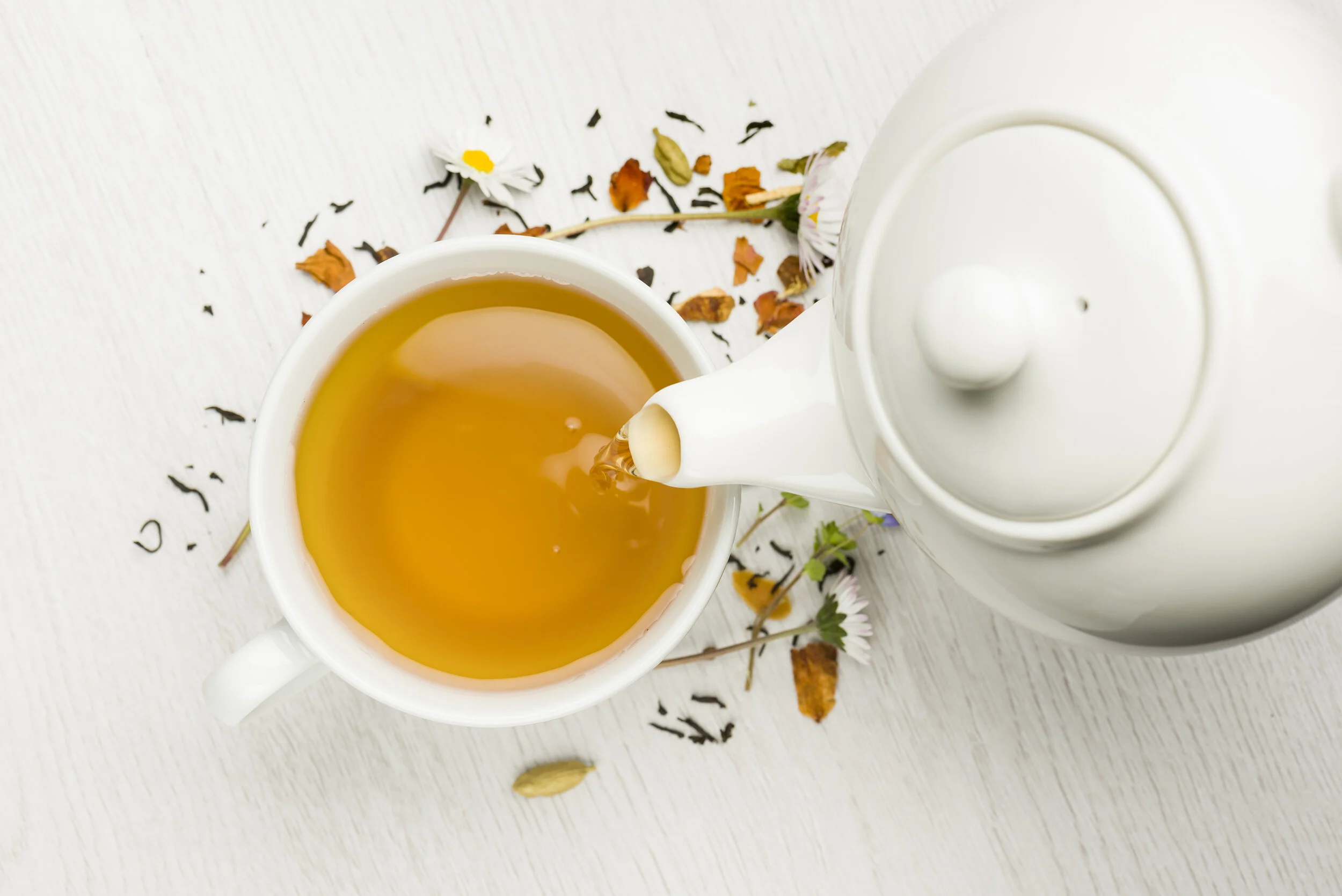Tea 101: Types, Benefits, and More
By Lizzie Streit, MS, RDN, LD
Enjoying a hot cup of tea isn’t just cozy and comforting. It’s also a healthy habit that may provide a slew of benefits!
As one of the most widely consumed beverages (second only to water!), tea is “steeped” in tradition. It’s been enjoyed for thousands of years, by Chinese emperors, British monarchs, and people all over the world.
In addition to the popular black and green teas, there are hundreds of other varieties made from different herbs and plants. Tea can be a healthy and delicious addition to your diet, especially when it’s prepared in the right way without sugar or unnecessary add-ins!
Types of Teas
Teas that are made from the Camellia sinensis plant, an evergreen shrub native to China, are considered “true” teas. These include black, white, green, and oolong teas.
These teas all contain caffeine but differ in color, strength, and taste. They’re widely available and can be consumed hot or iced.
Herbal teas, on the other hand, are typically made from blends of herbs, spices, leaves, roots, flowers, or other parts of edible plants. They usually do not contain caffeine.
Popular types of herbal teas include:
Chai: made from a mix of cinnamon, cloves, pepper, cardamom, and ginger
Chamomile: made from dried chamomile flowers
Dandelion: made from various parts of the dandelion plant (yes, the same one that grows as a weed!)
Ginger: made from ginger root
Hibiscus: made from dried hibiscus flowers
Lemon balm: made from the leaves of an herb belonging to the mint family
Peppermint: made from leaves of the peppermint plant
Roobios: made from the leaves of a red shrub native to South Africa
Benefits of Drinking Tea
Plain tea is a virtually free of calories, fat, sugar, and sodium, but loaded with beneficial compounds!
Green tea is well known for containing antioxidants that may boost heart health and reduce inflammation, such as epigallocatechin gallate (EHCG) (1).
What’s more, drinking black tea has been shown to help reduce fasting blood sugar as well as cholesterol and triglyceride levels, possibly due to the flavonols it contains (2).
As for herbal teas? They provide a number of benefits, from soothing an upset stomach (peppermint), helping you relax (chamomile, lemon balm), fighting inflammation (ginger), and boosting the amount of antioxidants in your body (3, 4).
How to Incorporate Tea into a Healthy Diet
Tea is a healthy beverage that can easily fit into a balanced diet, without contributing empty calories.
It’s best to consume tea with no or limited add-ins (such as lemon or a dash of milk), instead of tea drinks that contain sugar, syrups, and/or excess cream or milk. You can enjoy tea hot or cold and at any time of the day. Just be careful about drinking caffeinated teas too close to bedtime.
And remember, there are tons of teas that you can try! Don’t be afraid to experiment until you find one that you like.
Note from Healthy For Life Meals: Tea is an excellent beverage to enjoy while you’re working to lose weight and eat healthy. Check out the menus for our 1200, 1500, or 2000 calorie plans today.

